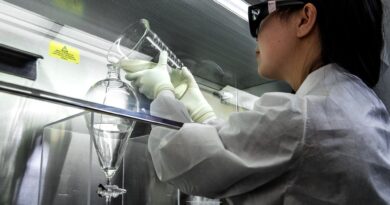“Revolutionizing Hydrogen Production: The Mechanics of a PEM Electrolyzer and Its Role in Sustainable Energy”
Introduction
In the pursuit of sustainable energy solutions, the Proton Exchange Membrane (PEM) electrolyzer has emerged as a pivotal technology in revolutionizing hydrogen production. This article delves into the mechanics of a PEM electrolyzer and explores its significant role in fostering a sustainable energy future.
Understanding PEM Electrolyzers
The Basic Principle
pem electrolyzer how it work use electricity to split water into hydrogen and oxygen. This process, known as electrolysis, occurs in a unit composed of an anode, a cathode, and a proton exchange membrane situated between them.
Key Components and Function
The proton exchange membrane, the central component, allows protons to pass through while blocking electrons. At the anode, water molecules are oxidized to produce oxygen, electrons, and hydrogen ions (protons). The protons then migrate through the membrane to the cathode, where they combine with electrons (from the external circuit) to form hydrogen gas.
Advantages of PEM Electrolyzers
High Purity Hydrogen Production
One of the main benefits of PEM electrolyzers is their ability to produce high-purity hydrogen. The separation of gas streams and the membrane’s properties ensure that the hydrogen produced is of high quality and free from impurities.
Dynamic Response to Renewable Energy
PEM electrolyzers are well-suited to work with renewable energy sources like solar and wind. They can operate efficiently under variable power inputs, making them ideal for use in renewable-based energy systems.
Compact and Modular Design
Compared to traditional alkaline electrolyzers, PEM units are more compact, requiring less space. This modular nature allows for scalability, catering to different sizes of hydrogen production requirements.
The Role in Sustainable Energy
Facilitating Green Hydrogen Economy
PEM electrolyzers are crucial in developing a ‘green hydrogen economy.’ When powered by renewable energy sources, they produce hydrogen without carbon emissions, contributing significantly to decarbonizing various sectors like transportation, industry, and power generation.
Integration with Renewable Energy Systems
These electrolyzers can be integrated into renewable energy systems to provide energy storage solutions. During periods of excess power generation (like peak solar or wind periods), the electricity can be used to produce hydrogen, which can be stored and used when required.
Enhancing Grid Stability
By coupling PEM electrolyzers with renewable energy sources, they can provide grid balancing and storage services, thus enhancing the overall stability and reliability of the power grid.
Challenges and Future Perspectives
Cost and Efficiency Improvements
Ongoing research is focused on reducing the cost and improving the efficiency of PEM electrolyzers. Advances in membrane technology and catalysts are key areas of development.
Scaling Up Production
For PEM electrolyzers to have a broader impact, scaling up from pilot projects to industrial-scale hydrogen production is essential. This requires investments in infrastructure and technology.
Policy and Market Development
Supportive policies, market mechanisms, and international collaboration are crucial for creating a market for green hydrogen and ensuring the widespread adoption of PEM electrolyzer technology.
Conclusion
“Revolutionizing Hydrogen Production: The Mechanics of a PEM Electrolyzer and Its Role in Sustainable Energy” underscores the significance of this technology in the transition to a sustainable energy future. The PEM electrolyzer not only offers a clean and efficient way to produce hydrogen but also complements the broader integration of renewable energy sources into our energy systems. As we move forward, advancements in this technology will be pivotal in achieving global sustainability goals and ushering in an era of clean, green hydrogen.
Top of Form

